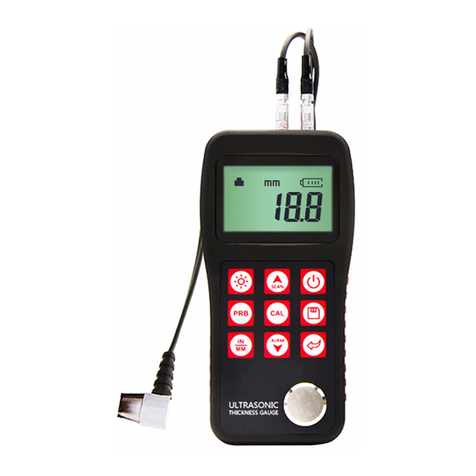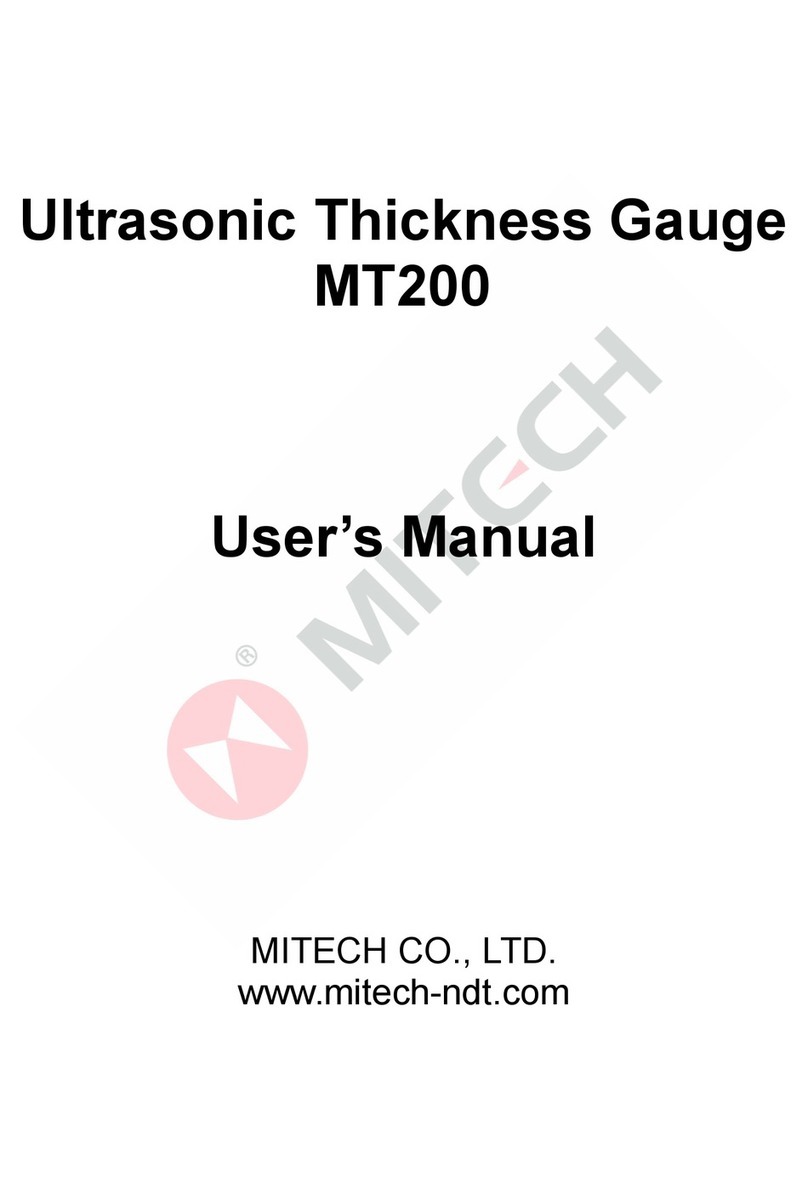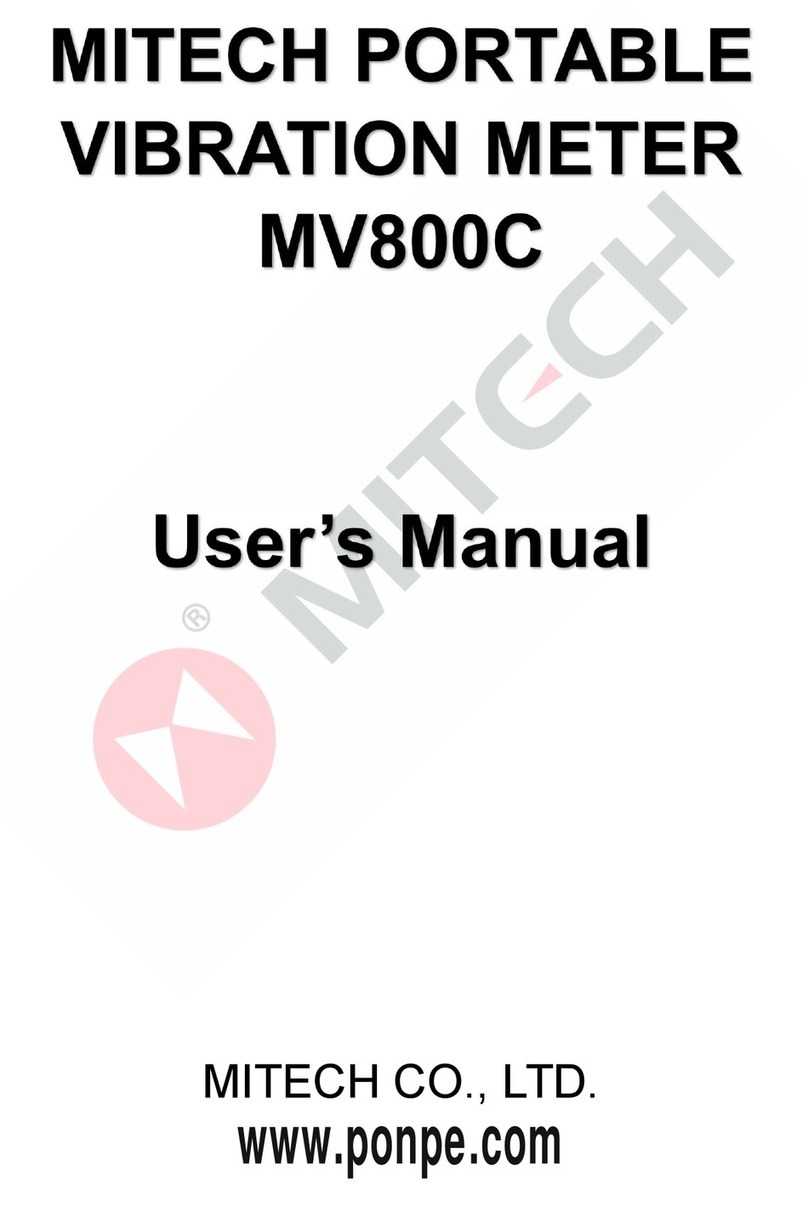
3 Preparation
3.1 Transducer Selection
The gauge is inherently capable of performing measurements on a wide range of materials,
from various metals to glass and plastics. Different types of material, however, will require the use
of different transducers. Choosing the correct transducer for a job is critical to being able to easily
perform accurate and reliable measurement. The following paragraphs highlight the important
properties of transducers, which should be considered when selecting a transducer for a specific
job.
Generally speaking, the best transducer for a job is one that sends sufficient ultrasonic energy
into the material being measured such that a strong, stable echo is received by the gauge. Several
factors affect the strength of ultrasound as it travels. These are outlined below:
Initial Signal Strength. The stronger a signal is to begin with, the stronger its return echo will
be. Initial signal strength is largely a factor of the size of the ultrasound emitter in the transducer. A
large emitting area will send more energy into the material being measured than a small emitting
area. Thus, a so-called “1/2 inch” transducer will emit a stronger signal than a “1/4 inch”
transducer.
Absorption and Scattering. As ultrasound travels through any material, it is partly absorbed. If
the material through which the sound travels has any grain structure, the sound waves will
experience scattering. Both of these effects reduce the strength of the waves, and thus, the
gauge’s ability to detect the returning echo. Higher frequency ultrasound is absorbed and
scattered more than ultrasound of a lower frequency. While it may seem that using a lower
frequency transducer might be better in every instance, low frequencies are less directional than
high frequencies. Thus, a higher frequency transducer would be a better choice for detecting the
exact location of small pits or flaws in the material being measured.
Geometry of the transducer. The physical constraints of the measuring environment
sometimes determine a transducer’s suitability for a given job. Some transducers may simply be
too large to be used in tightly confined areas. Also, the surface area available for contacting with
the transducer may be limited, requiring the use of a transducer with a small wearface. Measuring
on a curved surface, such as an engine cylinder wall, may require the use of a transducer with a
matching curved wearface.
Temperature of the material. When it is necessary to measure on surfaces that are
exceedingly hot, high temperature transducers must be used. These transducers are built using
special materials and techniques that allow them to withstand high temperatures without damage.
Additionally, care must be taken when performing a “Probe-Zero” or “Calibration to Known
Thickness” with a high temperature transducer.
Selection of the proper transducer is often a matter of tradeoffs between various
characteristics. It may be necessary to experiment with a variety of transducers in order to find one
that works well for a given job.
The transducer is the “business end” of the instrument. It transmits and receives ultrasonic
sound waves that the instrument uses to calculate the thickness of the material being measured.
The transducer connects to the instrument via the attached cable, and two coaxial connectors.
When using transducers, the orientation of the dual coaxial connectors is not critical: either plug
may be fitted to either socket in the instrument.
The transducer must be used correctly in order for the instrument to produce accurate,
reliable measurements. Below is a short description of the transducer, followed by instructions for
its use.
































